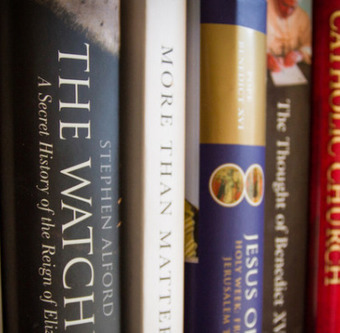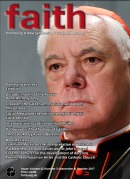
Book Review
How we should read Vatican II
Vatican II a Pastoral Council - Hermeneutics of Council Teaching by Serafino Lanzetta, Gracewing, 494pp, £22.17.
reviewed by William Massie
It is unarguable that no decade in the 2000 year history of the Catholic Church saw more change that from 1960 to 1970. While politics, society and culture were changing rapidly during those years, the seismic event we call Vatican II is the single most important cause of the changes in the Catholic Church. Fr Lanzetta offers an in-depth interpretation of the Council, choosing some of its emblematic texts and teachings. He concludes that the Council has been “perhaps in a way never before seen in the history of the Church, the object of the most disparate hermeneutics and judgments of the most varied kind ... rupture with the Church… and with theology” (p.421). And yet bishop-theologians like Danneels and Kasper, as well as all the popes of these times, have insisted on the need to emphasise an overarching continuity. Pope Benedict XVI’s Address to the Curia from December 2005 is well known. Less often quoted is Blessed Paul VI from a catechesis given at a General Audience in 1966. “The teachings of the Council do not constitute a complete, organic system of Catholic doctrine. // We must not separate the teachings of the Council from the doctrinal heritage of the Church. Instead we must take a good look at where they fit into it and how they are consistent with it and supply it with added testimony, growth, explanation and application.” (Introduction p. xxxvii)
A cause of this rupture is the interpretation of Vatican II as an ‘event’ rather than to focus on the 16 texts that resulted. This often follows on from paying too much attention to well-intended but loose and hard-to-define descriptions of the Council as a ‘New Pentecost’ or ‘aggiornamento’. Lanzetta describes this tendency as putting the Council ‘before’ the Church, which is an error. On the one hand, the Council was not a moment of new ‘divine revelation’; on the other, there would not have been any council had the Church not previously existed!
The ‘periti’
If the Council to be judged by its texts, its decisions, rather than its ‘spirit’ (always harder to tie down) or an event marking a new starting point, then its texts must themselves be contextualised. This is Lanzetta’s great achievement. He first provides a survey of the theological landscape of the Council in the form of those minds who either as bishops or advisers (the ‘periti’) contributed so much to the preparation of the schema, their rejection, their re-writing the debates, the revisions, the final version. Some will be well known to students of 20th century Catholic theology - De Lubac, Rahner, Ratzinger, Laurentin, Kung; some perhaps less well known who nevertheless made significant contributions - Parente, Betti, Scheffcyzk.
Pastoral vs. Dogmatic?
An important issue which Lanzetta highlights very early on but never really settles is the question of the meaning of Vatican II as a pastoral Council. The meaning of ‘Pastoral’ was never defined at the Council but assumed generally to express the manner of reaching out within the Church and beyond, to explain its teachings rather than to make new definitions or condemnations. In 1966 Paul VI would recall that the Council was about “voice… style… approach” in the teaching of doctrine rather than debate or apologetics (p.426). However, often ‘pastoral’ appears almost in juxtaposition to ‘dogmatic’. Early on Lanzetta suggests that ‘pastoral’ is simply the ‘manner’ in which the dogmatic is passed on or conveyed. So in the final chapter, Lanzetta questions post-Conciliar approaches to ecumenism where the ‘dogmatic’ (to do with knowing the truth) is juxtaposed to the ‘pastoral’ “which starts out from the historic and pragmatic fact, and on behalf of this aims at possible dialogue, without changing teaching, but de facto neither improving understanding of it, but even with the risk of altering its significance by virtue of the dialogue method chosen…”.
Clearly, any opposition of dogmatic and pastoral is unacceptable. One fears that this lack of clarity at the time of the Council is responsible for countless situations since where doctrine has been over ridden by appealing to ‘pastoral necessity’. Is this even a cause of the current divergent disciplines laid down by bishops with regard to giving communion to those in irregular situations, described as more ‘pastoral’ while in mutual contradiction? Lanzetta quotes Benedict XVI in the context of ecumenism, but valid in the wider context, “Knowing the truth is a right of the conversation partner in every true dialogue. It is a requirement of love for one’s brother or sister. In this sense, it is necessary to face controversial issues courageously, always in a spirit of brotherhood and in reciprocal respect” (fn. 137, p. 415). This is truly pastoral.
Inconsistency
Lanzetta focusses above all on the constitutions, Lumen gentium, on the Church, and Dei verbum on divine revelation and its transmission. Within them, he only looks at some of the major doctrinal issues: in Lumen gentium on the sacramentality of the episcopacy, collegiality, the question of membership of the Church; in Dei verbum on the relationship between scripture and tradition as the loci where divine revelation is to be found. The Council fathers preferred to leave disputed questions ‘open’, consistent with the ‘pastoral’ objective. However, Lanzetta points out that there was not always clarity about what constituted a ‘disputed’ question. For example, the ‘material insufficiency of scripture’ for dogmatic truth was generally assumed and taught since the Council of Trent, given the need for scripture and tradition to ground Catholic doctrine. However, after much debate Dei verbum avoided a formal statement to confirm this. Lanzetta does not accept that this was in dispute before the Council (p.432). The aim was consciously ecumenical, following the directive laid down by Pope John XXIII for the Church to make clear its teachings in those essential matters so as to make itself more understandable to the separated Churches of the Orthodox and the ecclesial communities of the Reformation. One problem in this lies in its inconsistency. In many other documents of the Council there are statements of Catholic truths which draw on traditions that very evidently are not found in the scriptures, for example the existence of seven sacraments, the perpetual virginity of Mary. If this is not helpful then it is surely not ‘pastoral’ either. Lanzetta also points to abusive claims after the Council of “a material completeness of the Bible” by theologians such as Hans Kung.
The deep wound
In the last few pages of the book he speaks frankly about the “serious crisis” suffered by concept of ‘Traditio’, the “deep wound which the Church is experiencing after Vatican II”, owing to the refashioning of the understanding of Revelation from the conceptual, propositional approach of Vatican I and scholastic theology to the notion of Revelation as experience and encounter, leading to “a displacement of the dynamic aspect of revelation to the detriment of the noetic”, “a gap between truth and love” and a “strong subjectivism”. Lanzetta points out that this crisis has made Traditio appear in opposition to ‘progressivism’ whereas of course everything in the Church is Traditio, literally ‘handed on’, all the way back to Christ himself. Lanzetta would like clarification to these matters. In some fascinating paragraphs he wades into the controversy suggesting the “projection of Tradition over Scripture” so that it is clear that “there can only be one source, Revelation itself…” “Sacred scripture is the regola of the faith in so far as it is divinely inspired; Tradition itself divinely assisted… allows the scriptures to be always contemporary for humanity” and for “faith to be able to have in itself a solid basis for those truths which it bears in itself…” (pp. 437-438). The Eucharist itself is an example of this. It ‘comes’ from Tradition, it is ‘expressed’ in the Scriptures.
Ecumenical sensitivity
In looking at the Council’s treatment of the Blessed Virgin Mary, the author criticises an excessive ecumenical sensitivity. In seeking to “return to the sources” there was a consequent and conscious neglect of recent Papal teaching about Mary, particularly with regard to her role of mediation. Lanzetta is not only concerned that the Mother of God not be denied due honour but also that an opportunity to shed light on an anthropological question was being neglected: the ability of humanity freely and actively, through grace to merit grace, resulting in “encouraging deep down a more pessimistic vision of human cooperation in salvation” (p. 399).
In the final pages of the book Lanzetta calls for new definitions of Mary as Mediatrix and Co-Redemptorix to rectify this negligence and provide an opportunity for the Church’s Magisterium to flex some under-used muscles in the ministry of Truth. Indeed, the author laments that “Between the sources and Vatican II there seems to us to be lie a vacuum, which, alas, robs the faith. The Second Vatican Council [is] part of the whole, a whole which is much greater: the Church” (p. 245).
Concern for integral truth
Lanzetta’s magnum opus is a passionate and well-argued and evidenced call for the Second Vatican Council to be read within a hermeneutic of continuity in the Church of the two millennia; and something more: for various questions consciously left open by the Fathers now to be addressed, from a pastoral concern for integral truth.
This is not an easy book and could probably not be recommended for general readership. There are many long passages of untranslated Latin texts from the various schemas and drafts and final versions as well as the letters and exchanges between theologians and Council Fathers. There are also some very long sentences and difficult syntax which may be accounted for by an over-literal translation from the Italian original. Classic works like Ralph Wiltgen’s The Rhine Flows into the Tiber and more recently Matthew Levering’s The Reception of Vatican II provide an easier and more complete overview of the Council. However, Fr Lanzetta writes carefully and in detail on contested matters. He makes use of records from the Vatican Archives only recently made available, some of them private correspondence between the various participants at the Council, which shed light on the intentions of Fathers and theologians. Vatican II continues to impact on the everyday life of Catholics. Accusations of betrayal of the aims of the Council continue to be thrown at those called too conservative or too progressive. A careful re-reading of the texts within their context remains essential. Fr Lanzetta has performed a great service.
Notes:
Rev. William Massie is the Catholic chaplain to Hull University.





